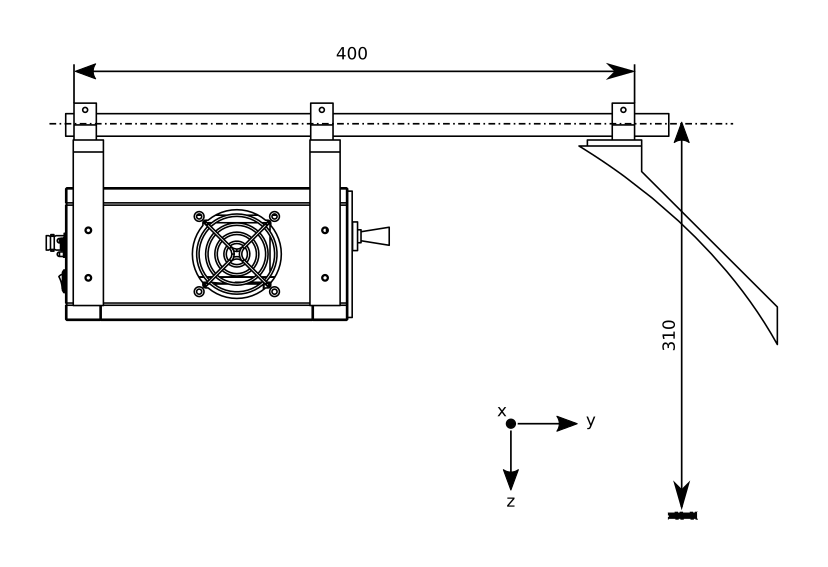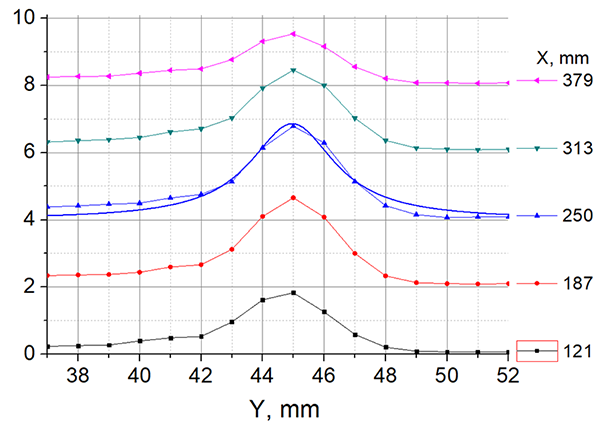Terahertz 300 GHz scanner — setting a higher standard
TeraSense has been providing leading systems for linear scanning both at 100 and 300 GHz. As there is always room for improvement, we have invested a great deal of effort into advancing the optical component of our 300-GHz high-speed linear scanner.
Limitation of the previous version of the scanner had to do with 512-pixel size of its linear camera. Although the former optical system performed well, it was not fully optimized for such a long sensor array. Thus, our main challenge was to achieve a maximally uniform distribution of the incident power in directions along the sensor array and perpendicular to the sensor plane, as designated in Figure 1 by the x-axis and the z-axis, respectively.

The new optical system has been designed specifically for a linear sensor 512 pixel (256 mm) long. The experimental data shown in Figure 2 confirm that we have attained a nearly ideal narrow-line shape of the beam with reasonably consistent radiation level over the full length of the sensor array in the x-direction. Importantly, the resultant 3-mm beamwidth in the y-direction also matches the actual width of the detector array. Consequently, focusing the source power on the camera more precisely has allowed us to boost the sensitivity and dynamic range of the scanner.


Furthermore, owing to the modified optics, in the latest version of the scanner we were able to optimize the depth of focus—i.e., to achieve maximum concentration of the source power over a relatively sizable interval in the z-direction, as illustrated in Figure 3. According to the test results plotted in the figure, the new system provides approximately 40-mm depth of focus, which ensures its high performance in inspecting objects of commensurate thickness.

By and large, in its current arrangement, with a special parabolic mirror, the 300-GHz linear scanner has become considerably more efficient—with a higher signal-to-noise ratio (SNR) and better controlled and more stable geometry of the source beam. As a result, the improved TeraSense system opens up exciting opportunities for implementing THz scanning technology in NDT quality control, particularly in industries, such as food processing, pharmaceutics, automotive and agricultural production, where SNR becomes a critical factor.
At TeraSense we are committed to strive for perfection. Hence, our persistent innovative efforts are bound to bring forth many more creative solutions in the future.